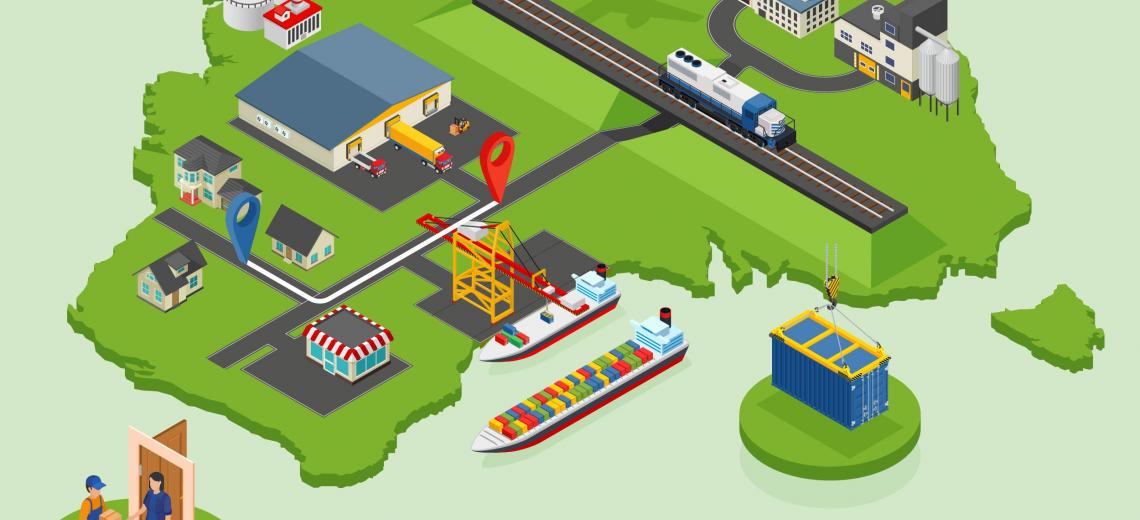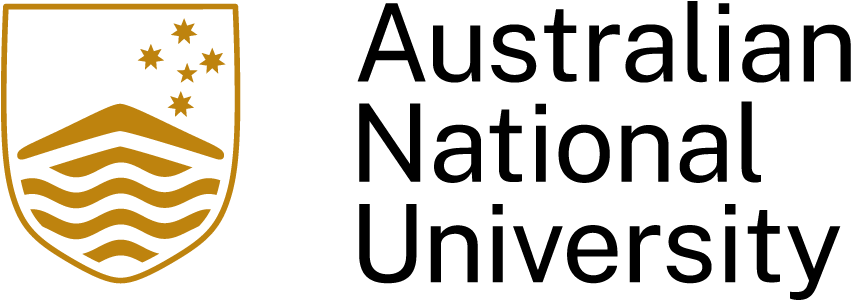
Plan for unlocking the Australian economy during the COVID-19 mobility lockdowns
By Professor Steven Roberts and Professor Rabee Tourky
We provide our thoughts on a plan for unlocking productivity within the Australian economy during the COVID-19 lockdown.
Given the remoteness of any treatment for infections, Australia will need a strategy for ratcheting up economic activity once COVID-19 transmissions have been initially controlled. The plan we present anticipates a prolonged response to the pandemic that extends until treatments are found, possibly 18 months or more. We also assume that Australia will shortly, if not already, have the COVID-19 outbreak under control, and that this provides an opportunity to unlock the economy in a controlled manner with levers that can be readily applied. Our plan aims to restart the economy while providing levers for health authorities to keep the outbreak controlled — keeping the infection rate in check, reducing death rates, and achieving any other objectives that may arise during the health crisis.
In another recent informal note, “Trading our way out of the COVID-19 economic downturn”, June Ma, Rohan Pitchford and Rabee Tourky suggest that the economic slowdown in economies during the COVID-19 crisis “has arisen from deliberately introduced frictions in human interaction at local, regional and international levels” and that “the only real exit strategy available to us is based on a fundamental principle of economics: we trade our way out.”
The main insight that we draw on here is that there are situations where restrictions on human mobility do not matter for economic outcomes. To understand this — and the motivation for our plan — consider a thought experiment. There are two population centres in the same country. If labour can move from one to another, then one expects that wages for the same kind of job will be equal between the two. This is because workers will have an incentive to migrate from a centre that has lower wages to a centre that has higher wages. What happens when the government restricts this migration between the two population centres? Will the wages be different between the two regions? Basically, the answer depends on whether a highway and railway connect the two population centres, allowing for low-cost, unimpeded trade between the regions. Indeed, the answer to these questions hinges on the ability of the regions to trade with each other in goods and whether the two regions have access to the same technologies. Theoretically, the Lerner-Samuelson factor price equalization theorem tells us that even if humans are unable to move between the two regions, free trade in goods between the regions equalises wages (and equalises the rent from capital). The economic outcome is unchanged from a situation with full human mobility. A more sophisticated theoretical models, which take into account geography, multiple population centres, and amenities, can be found in many recent papers on internal migration and trade (see, for example, https://www.aeaweb.org/articles?id=10.1257/aer.20151507). Though there are important exceptions to the factor price equalisation theorem, the spirit of the theorem is maintained in many settings: trade ameliorates the negative economic consequences of restrictions on human mobility between economic centres and can theoretically eliminate all its negative economic effects. Lack of mobility has other obvious impacts, but here we are focussing purely on economic consequences.
Our proposal is to put the insights of this thought experiment into practice:
- Locally within Australia, take a geographic rather than an industry- or state-wide approach to the lockdown strategy, allowing for extensive local commerce between economic regions.
- Australia should also extensively promote international exports and invest in infrastructure for this while maintaining general international travel bans.
We divide our plan into two sections: a sustainable local strategy, and a strategy for enhancing international trade.
Free commerce and mobility restrictions within Australia
Economic regions defined by combing electoral boundaries:
Status quo mobility across regions is maintained, soft lockdown regime implemented within regions (social distancing, bans on large gatherings, etc.), and, importantly, facilitated free commerce between regions.
Our proposal is to partition Australia (or partition each of its states) into economic regions and impose two classes of lockdowns, one across regions and the other within regions:
- Strong mobility restrictions across regions: Lockdown across regions maintains the status quo on April 10 in Australia. The present strong restrictions on mobility between regions is maintained.
- Weak restrictions on mobility within regions: Human mobility within each economic region will, by default, be weakly restricted — broadly akin to the Swedish style of soft lockdown model (e.g., https://www.abc.net.au/news/2020-04-07/coronavirus-sweden-adopting-more-flexible-approach/12118422) [We are not generally advocating a Swedish-like approach. We are, however, advocating a loose lockdown approach within regions where COVID-19 transmission has been eradicated or controlled to the satisfaction of health authorities.]
- Free commerce, including delivery services, across all regions — and infrastructure investment aimed at encouraging this.
The main planning task is the geographic partition of regions. How should an economic region be defined? We propose the use of electoral boundaries for this purpose. Up to five federal neighbouring electorates would be combined to form one economic region. For example,
- ACT, SA, NT, and TAS each form their own economic regions.
- QLD is divided into six economic regions, separating the Gold Coast and the Sunshine Coast from Brisbane.
- Victoria is divided into eight economic regions of contiguous units, greater Melbourne city comprising three of these.
- NSW is partitioned into ten economic regions; and WA, four.
Data regarding COVID-19 infections is regularly sampled in each economic region, and cross-region restrictions are eased or strengthened accordingly. Two neighbouring regions in which the virus has been eradicated or effectively controlled will have unrestricted mobility. If the infection growth in one region increases, then cross-region mobility is restricted. Individuals who would ordinarily leave their economic region for work, school, etc., would work from home and conduct schooling online, respectively, until the restrictions are eased.
This has the following advantage:
- Electoral rolls allow us to associate each adult Australian citizen with one electorate, thus making lockdown restriction enforceable. Enforcement involves fines for businesses allowing workers not registered to be on premises and police patrols of roads connecting economic regions.
- Most people live and work in one or neighbouring electorates.
- Most people’s supportive social networks are within one or two proximate electorates.
- Political competition within Australia is such that most electorates have access to the same state and federal government services. Further, the retail arms of governments have a presence in every electorate or neighbouring electorate.
- Any sampling of infection data can be easily done within each electorate, and hence each economic region. We are used to sampling all sorts of information within electorates, and there is a large industry of pollsters and surveyors who understand the demographics of these regions. The commercial polling infrastructure can be tasked with collecting infection data.
For this plan to work, it is crucial that the government improves roads between economic regions for the purpose of transporting goods and commodities. Free, low-cost trade between neighbouring economic regions is a must. The plan hinges on free trade across economic regions without free mobility of humans.
Strategies for enhancing international trade
We anticipate that international travel will be impeded far longer than restrictions on local travel. This is because infection numbers and their growth in Australia have been small relative to our main trade partners’ and relative to the tourist destinations favoured by Australian tourists.
International trade is traditionally divided into two components: trade in goods and commodities ( e.g., iron ore exports and import of cars), and trade in services (e.g., education export, international tourists [tourism exports], and tourism imports [Australians holidaying overseas]).
The objective of our plan is to enhance unimpeded trade in commodities and goods, and to support the export industries in the service sector, anticipating a strong lockdown of the service import industry [a ban on Australians traveling overseas for a holiday]. We anticipate a prolonged ban on all short-term travel, including tourism, in either direction. Under our model, domestic tourism is allowed across economic regions when they are open.
However, Australia imports human capital by way of migration and work visas. We also export education. Both of these activities involve long stays in Australia. They have a persistent positive effect on the Australian economy, and we do not see a reason that they cannot be facilitated. International travel involving moving to Australia for more than a year can be viewed as no different from international trade in commodities. If managed well, it is sustainable.
Exporting of education (e.g., students travelling to Australia for study) and importing of human capital (e.g., workers on long-term visas) are allowed under strict protocols to stop imported cases of COVID-19. These exports and imports are extremely important to our economy and culture, and it is vital they are re-started in a controlled manner. Similar to what the Government has implemented for Australians returning home, people in these two groups could travel en-masse to Australia and then be subject to a period of quarantine. We propose that this export and import be only from countries that have COVID-19 controlled and strict protocols that incorporate medical tests pre- and post- travel would need to be developed by health experts. While we are not experts, we believe that the risk of this process would be small, certainly, and necessarily, less than the current quarantine process for Australian’s returning from abroad or from cruise ships.
Steven Roberts is a Professor of Statistics and Dean of the ANU College of Business and Economics.
Rabee Tourky is the Trevor Swan Distinguished Professor of Economics and Director of the ANU Research School of Economics.
